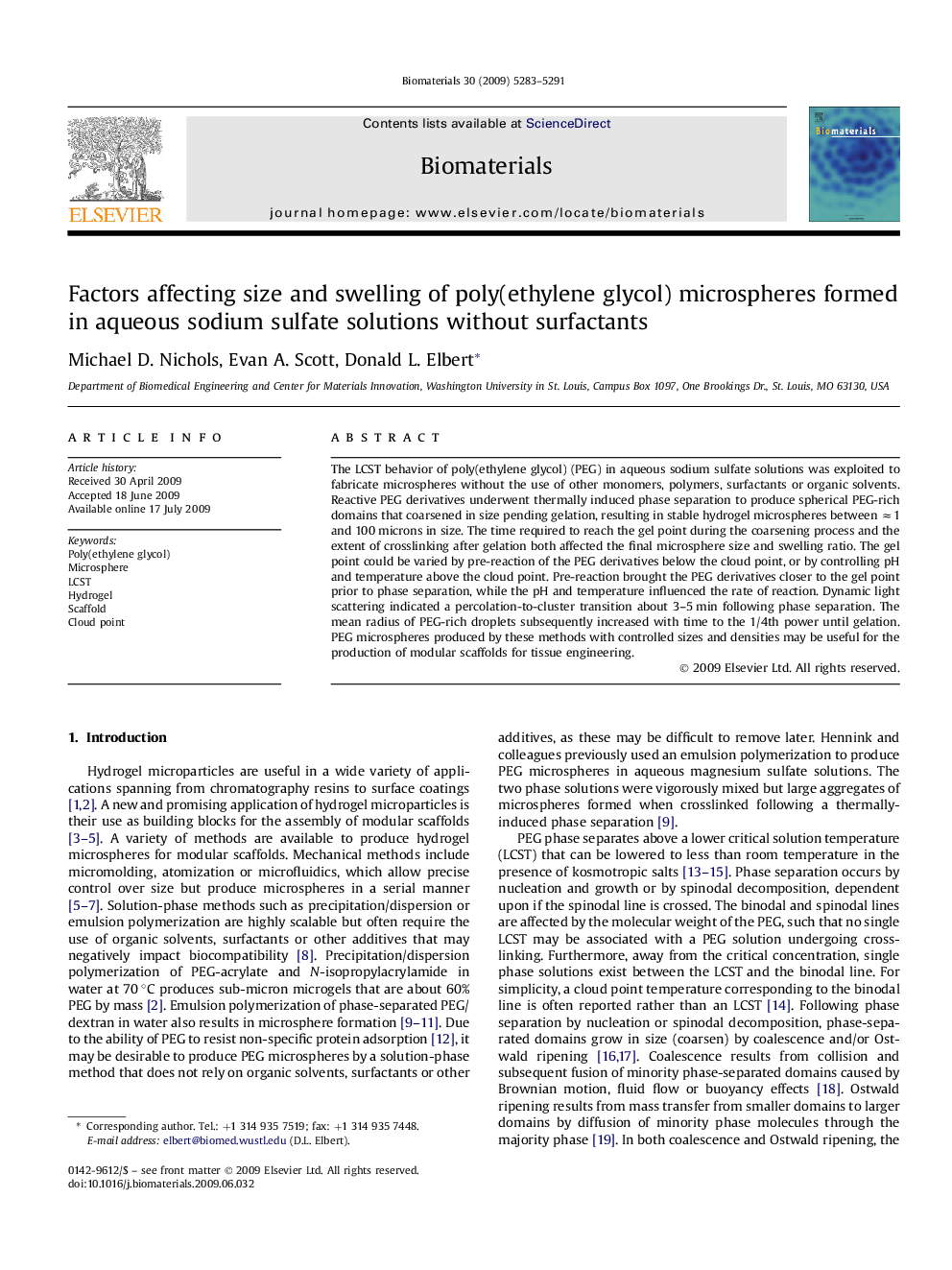| Article ID | Journal | Published Year | Pages | File Type |
|---|---|---|---|---|
| 8895 | Biomaterials | 2009 | 9 Pages |
The LCST behavior of poly(ethylene glycol) (PEG) in aqueous sodium sulfate solutions was exploited to fabricate microspheres without the use of other monomers, polymers, surfactants or organic solvents. Reactive PEG derivatives underwent thermally induced phase separation to produce spherical PEG-rich domains that coarsened in size pending gelation, resulting in stable hydrogel microspheres between ≈1 and 100 microns in size. The time required to reach the gel point during the coarsening process and the extent of crosslinking after gelation both affected the final microsphere size and swelling ratio. The gel point could be varied by pre-reaction of the PEG derivatives below the cloud point, or by controlling pH and temperature above the cloud point. Pre-reaction brought the PEG derivatives closer to the gel point prior to phase separation, while the pH and temperature influenced the rate of reaction. Dynamic light scattering indicated a percolation-to-cluster transition about 3–5 min following phase separation. The mean radius of PEG-rich droplets subsequently increased with time to the 1/4th power until gelation. PEG microspheres produced by these methods with controlled sizes and densities may be useful for the production of modular scaffolds for tissue engineering.
